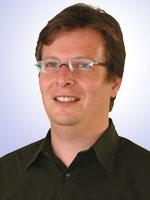Research into wireless channels for intra-vehicle communication and positioning
Abstract
The project is focused on research into the millimeter wave (MMW), UWB and infra-red (IR) signal propagation in small diverse spaces such as a vehicle compartment. The main part of the project will deal with measuring and modeling the channel for the purpose of data transmission in wireless personal area networks (WPANs) working in the infrared band and for object localization using systems operating in the UWB and MMW bands. Since the above-mentioned usage of these technologies is in its beginnings and a number of necessary measurements and investigations have not yet been performed, the most significant results are expected. Another intention of the project is the verification and extension of the existing MMW and UWB channel models derived for WPAN and sensor network technologies. Both the large- and small-scale channel features will be investigated and statistical channel models created. The final part of the project will be focused on comparing partial channel models and determining admissible bounds of the most important parameters for different scenarios and channel state.
Significance of the project for the area of science and research
The general knowledge obtained by solving the project will primarily be used in the areas of communication systems, digital signal processing, and partially also optics.
- Of great contribution will be in particular the common research into the UWB, MMW, and optical signal propagation in the very small and diverse spaces (such as car, aircraft or combat vehicle compartment).
- Of much significance for the research into signal processing will be the examination and comparison of the various methods of parameter estimation and detection of multipath disturbed signals.
Significance of the project for practice
Although the project solution is primarily a matter of basic research, the results obtained can significantly support the application of the high-speed and reliable wireless communication systems in vehicles. These systems can improve passenger comfort due to simple connectivity of the multimedia devices or computers to the vehicle network, decrease the vehicle weight and consequently the fuel consumption due to the replacement of the wire harness by a wireless technology, and optimize the network configuration for reliable communication with devices within the vehicle according to their position, or avoid unauthorized usage of the car key (e.g. by children) equipped with the active transponder.
Significance of the project for the area of education
The research team of the project consists of experienced academic workers involved in long-term research in the area of channel modeling and signal processing. The expert knowledge and experience gained in the course of solving the project will show not only in their professional growth but also in the incorporation of new areas of communications, signal processing and signal propagation into the lectures of related courses and thus in increased quality of instruction.
Director

Christoph Mecklenbräuker, Univ. Prof. Dipl.-Ing. Dr.-Ing.